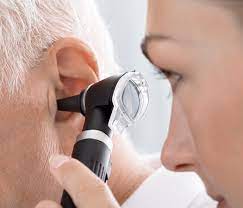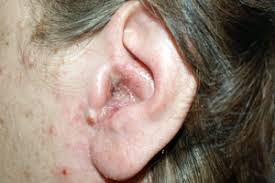How to tell if you have an Ear Infection
How To Tell If You Have An Ear Infection: Even while ear infections are more prevalent in children than in adults, adults are nonetheless prone to getting them. Adult ear infections can occasionally indicate a more significant health issue, in contrast to children’s ear infections, which are frequently benign and resolve rapidly. Enough Info

Your ear pain can be excruciating, and you might also experience other unpleasant symptoms like a fever or a sore throat. Make an appointment with your doctor if you think you have an ear infection to discuss your treatment options and receive a diagnosis. The good news is that ear infections can usually be treated easily and only last a few days.
Read Also; 22 Fast Home Remedies to Get Rid of a Cough
Method 1: How To Tell If You Have An Ear Infection
How do u know if I have an ear infection?
Recognizing signs and symptoms
1. Determine if you have pain in your ear
One indication that you could have a middle ear infection is ear pain. When you are lying down, this discomfort usually gets worse, especially if you are on the side of the infected ear.
- It may be challenging to distinguish the pain in your ear precisely because you could also be experiencing a headache. You can locate the source of the discomfort by lying down or tilting your head to either side.
- If you pull on your ear or press on your tragus, the little bump in front of your ear may hurt worse if you have an outer ear infection (otitis externa).
- If you push on the tragus while suffering from a middle ear infection, your discomfort is generally not going to become worse.
2. Check for drainage of fluid from your ear
Your middle ear’s typical secretions are removed through the eustachian tubes. These tubes cannot function correctly if they swell or become irritated. Your middle ear becomes clogged with fluid, which can cause an infection. You could see this built-up liquid oozing from your ear.
- An outer ear infection normally causes clear, odorless fluid. The fluid may indicate that the illness has advanced if it is yellow or contains pus.
- If the fluid discharge looks excessive or if the fluid seems crimson, consult a doctor right once. This might indicate that your ear has had more severe damage.
- Since the fluid is less frequent with an inner ear infection, the lack of fluid does not guarantee that you do not have an ear infection.
3. redness or itching inside your ear
An early indication that you have an outer ear infection might be that your ear itches. Additionally, your ear canal may seem redder than usual. How To Make Quesadilla (Step-by-Step Methods)
- The redness will spread further and the itching may get worse as the illness worsens.
- Asking someone else to examine your ear and note whether it seems redder than usual might be helpful. They might compare your infected ear to your healthy ear if it appears to be only one ear.
4. Determine whether you have a source of hearing
Hearing problems might occur if fluid is stuck in your ear. If you listen to anything with the ear you don’t think is infected, then plug that ear, and you should be able to tell more easily.
- Instead of being muffled when an inner ear infection is present, sounds will just sound quieter than usual. Tinnitus, a ringing or buzzing in the ears, is another condition that frequently occurs together with inner ear infections. How To Stop Drinking Alcohol ( Step- by Step- Guide )
- You can notice a change in how a kid or other person responds to you if you fear they have an ear infection. They could not be hearing you if they do this, according to this.
5. Evaluate if you’ve been feeling nauseous or eating less
An infection of the middle ear or the inner ear may cause nausea or lack of appetite. The dizziness that an inner ear infection frequently brings on might also result in nausea.
- A kid with an ear infection could be pickier than usual, but they won’t eat. Changes in sleeping habits are also frequent.
- You can have a decrease in appetite in addition to feeling fatigued or generally ill.
6. Test your balance or vision
You may have an inner ear infection if you experience balance issues or feel woozy. Sit or stand motionless and take a quick look at you to verify this. Vertigo is evident if you feel as though the room is spinning or moving around you. One of the primary indications that your inner ear is infected is vertigo.
- An inner ear infection may also be indicated by a change in vision, such as double vision or trouble focusing.
- If you get vertigo or dizziness and it persists for more than two to three days, consult a doctor.
7. Take your temperature to see if you’re running a fever.
A fever of 100 F (38 C) or higher is commonly seen with middle ear infections. Fever, however, can also be a sign of many other viruses or illnesses. If you have a fever without any other symptoms, you might not necessarily have an ear infection. How to do Crunches (Step-by-Step Guide 2023)
- Due to the side effects of over-the-counter medications, you may not be experiencing a fever if you have been taking it for a cold or allergies. Take your temperature once again when the medicine has worn off.
- You may normally wait to see whether the infection goes away on its own if your temperature is less than 102.2 F (39C). The majority of minor ear infections go better in a day or two and go away on their own in a week or two without medical attention.
Read Also; How To Make Quesadilla ( Step by Step Methods)

Method 2: How To Tell If You Have An Ear Infection
How do you clear an ear infection?
Diagnosing an ear infection
1. See your doctor if symptoms don’t improve within 48 to 72 hours
The majority of ear infections will resolve without treatment. But schedule a visit with your doctor if your symptoms don’t go away or if things worsen.
- If your ear fluid contains blood or pus or if your temperature is 102.2 F (39 C) or higher, call your doctor right once.
2. Tell your doctor if you’ve been swimming recently
You may have an outer ear infection if you’ve been swimming, especially in a natural body of water like a lake or river. Given that an outer ear infection is frequently caused by contact with bacteria present in soil and water, the term “swimmer’s ear” is frequently used to describe it.
- You can have an outer ear infection even if you haven’t been swimming if you often clean your ears with cotton swabs. These might cause infection by harming the delicate skin lining your ear canal.
3. Tell your doctor about your current health and symptoms.
You probably have an ear infection if you experience discomfort in one or both of your ears, fluid leakage, and distorted hearing. Additionally, you can feel feverish or have a sore throat. Having recently been unwell, especially with a cold or upper respiratory infection, is a common cause of ear infections.
- Your doctor might be able to make a diagnosis without performing a thorough examination of your ear if you exhibit the majority of the typical symptoms of an ear infection. Many typical symptoms, meanwhile, are also present in other diseases.
- If you’ve had allergies, your risk of developing ear infections is higher. If you smoke or reside with a smoker, you have a higher chance of developing an ear infection.
- Even if you believe they have nothing to do with one another, describe all of your symptoms to your doctor. Your doctor will be better able to determine if the issue is an ear infection or a mix of illnesses as a result.
4. Permit your physician to check your ears.
A pneumatic otoscope is a common tool used by doctors to examine your ear and determine whether fluid is present behind the eardrum. The doctor will lightly polish your eardrum. Normally, this would cause your eardrum to move. But if your ear is full of fluid, your eardrum won’t move.
- If your ear infection is more severe, if it keeps coming back, or if it hasn’t improved after being treated, your doctor could order more testing.
Read Also; How To Stop Drinking Alcohol ( Step- by Step- Guide )
Method 3: How To Tell If You Have An Ear Infection
Will ear infection go away on its own?
1. Use a warm compress to ease the discomfort
Within a week or two, the majority of ear infections will resolve on their own. Try placing a washcloth that has been soaked in warm water on your ear while you wait.
- The fluid in your ear may become looser and drain with the aid of a warm compress.
- After applying the hot compress to your ear for 10 to 15 minutes, remove it. After 20 to 30 minutes have gone since it was removed, you can put another one on. Throughout the day, repeat this cycle as frequently as you choose.
2. Anti-inflammatory drugs can be used to reduce pain and swelling
Pain relief can be provided by over-the-counter drugs such as acetaminophen (Tylenol) or ibuprofen (Advil or Motrin). These drugs help lessen inflammation, which can make it easier for the fluid to drain naturally.
- Unless your doctor instructs you otherwise, take these drugs as directed on the bottle.
3. Auto-insufflation can be used to change the pressure of air in your ears
This method is referred to as “popping your ears,” perhaps. Lean your head back a little to do it safely. Gently exhale after closing your lips and pinching your nose.
- The fluid may drain more quickly by using this approach, which drives air back into the eustachian tubes in your ears.
- Master the method, it could take some time, but if you don’t get any alleviation after the first try, stop doing it. Your ears can become damaged.
4. If your doctor recommends it, take the antibiotic
Your doctor might begin you on a course of antibiotics for some types of ear infections. If you have a fever of at least 102.2 F (39 C), this is particularly likely.
- Even if your health improves or the ear infection appears to have resolved, keep taking the full course of antibiotics. Absent that, the infection might come back.
5. If you have recurrent ear infections, seek advanced treatment.
If your ear infection doesn’t go away after therapy or continues returning, this might indicate a more serious issue. In order to identify the infection’s origin, your doctor could do further testing.
- Your doctor could insert small tubes in your ears if you get frequent ear infections. These tubes are used to drain the fluid from your eardrum. The majority of young infants with recurrent ear infections have this surgery.
Read Also; How to Make Atmosphere in Little Alchemy 2
conclusion:
How To Tell If You Have An Ear Infection:
A virus or bacterium in the middle ear is what causes an ear infection. This infection frequently follows another sickness, such as a cold, the flu, or an allergy, which leads to nasal congestion and edema as well as swelling of the throat and eustachian tubes.




